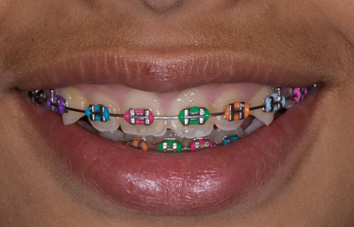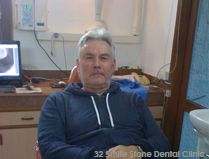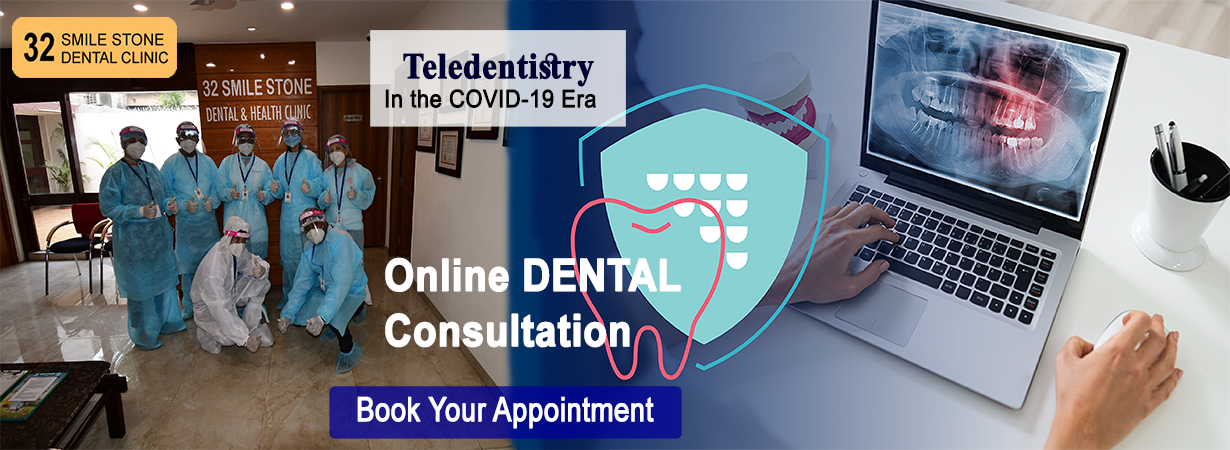Braces
What are Braces?
Dental braces is an excellent solution for people who have crooked, crowded, spaced out teeth or those who have an improper bite (an underbite or overbite). Braces help straighten your teeth using wires and brackets and improve the bite, thus helping to facilitate dental health and facial profile.
Why are they required ?
When the upper and lower teeth do not meet correctly, it can put strain on the muscles of the jaw leading to TMJ joint problems, muscle fatigue and headaches. Severe malocclusion causes facial deformities, speech and eating difficulties. Braces help to align the teeth in the proper form and occlusion, thus reducing the stress on the muscles.
Who needs braces?
Teeth can be moved at any age. Best results are achieved in children since the alveolar bones (bones around the teeth) can be molded easily as the child is growing. In adults, the results are much slowly achieved since the bone growth has already taken place. Therefore, it is recommended that orthodontic treatment is started as soon as the problem is noticed by the child, parent or dentist.
Orthodontic appliances can be used to help a child overcome the infantile habits of thumb sucking, finger sucking, tongue thrusting or over extended use of a pacifier. Sucking habits are usually not a major concern unless they are continued even after 6-7 years of age when the permanent incisors and molars start to erupt. Such habits can create an open bite wherein the upper and lower front teeth do not meet leading to mal-occlusion.
An important question asked by most patients is whether teeth would need to be removed or not for braces? This answer is best decided after a clinical examination by the orthodontist. He will guide you whether extractions are necessary and if so, how many? Minor crowding can usually be relieved without any dental extractions using fixed or removable appliances. Sometimes palatal expanders are also used to expand the jaws at an early age. When there is severe over-crowding, small alveolar ridges or no spaces between the teeth, extractions become necessary.
Orthodontic appliances can be used to help a child overcome the infantile habits of thumb sucking, finger sucking, tongue thrusting or over extended use of a pacifier. Sucking habits are usually not a major concern unless they are continued even after 6-7 years of age when the permanent incisors and molars start to erupt. Such habits can create an open bite wherein the upper and lower front teeth do not meet leading to mal-occlusion.
An important question asked by most patients is whether teeth would need to be removed or not for braces? This answer is best decided after a clinical examination by the orthodontist. He will guide you whether extractions are necessary and if so, how many? Minor crowding can usually be relieved without any dental extractions using fixed or removable appliances. Sometimes palatal expanders are also used to expand the jaws at an early age. When there is severe over-crowding, small alveolar ridges or no spaces between the teeth, extractions become necessary.
What are the types of braces?
Braces can provide adults the same benefits similar to children. However, treatment takes longer than it does for children since their bones are more dense due to age and jaw growth has stopped. The average adult wears braces for 18 months to 3years. Both children and adults need to wear a retainer once the braces are removed to prevent relapse.

These hold a thin wire in place with rubber bands to put pressure on the teeth and move them to the desired place. They are the least expensive and are clearly visible to the eye. Initially it can irritate the gums and cheek and one should be careful about the choice of eating foodstuffs. Avoid things that can stick to the braces, such as caramel or chewing gum; and eating hard foods which can move or dislodge the braces.

These are the same size and shape as metal braces, with the advantage that they have tooth colored or clear brackets that blend with the teeth. Some even use tooth colored wires teflon wires to make it even less noticeable.

These are the same as traditional metal brace except that the brackets and wires are placed on the inside of teeth.

These consist of a number of custom made clear aligners. They are removable and typically replaced every 2 weeks.
Types |
Advantages |
Disadvantages |
Metal Braces |
|
|
Ceramic Braces |
|
|
Lingual Braces |
|
|
Clear Aligners |
|
|
Enquiry Form
Testimonials

Thank you for a painless dental experience. I can recommend your skill to anyone that requires dentistry......

Thank you so much for an efficient and professional treatment. Got a dental implant placed in her office.....
Featured Services
Ceramic Veneers
Composite (white) Fillings
Scaling and Deep Cleaning
Dental Implants
Digital X-Rays
Root Canal Treatment
Braces
Night Gaurd
Sports Gaurd
Preventive Dentistry
Dental Jewellery
1 Hour Teeth Whitening
Home Bleaching
Flexible Partial Dentures
Complete Dentures
Clear Aligners
Tooth Extraction (Wisdom)
Smile Designing
Cosmetic Gum Treatment
Inlays and Onlays
Dental Bridge
Dental Crowns
Teledentistry














